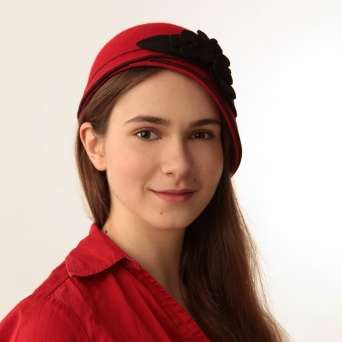After two years of relative obscurities produced with minimal sets (Luisa Miller in 2015 and Andrea Chénier in 2016), San Francisco audiences were ready for a grand opera to open their season. A refurbished revival of David Hockney’s 25-year-old Turandot was just the ticket: big sound, a stage full of people, and gaudy colors. No surprises here – from the mannered gestures to the standard Alfano ending, every detail seemed calculated to appeal to the traditionalist crowd.
This Turandot is dominated by color. The harsh red of the opening scene gives way to the deep blue of Calaf’s jacket for the Act Three love duet. Ping, Pang, and Pong are clad in abstract patterns of red, turquoise and purple, with their painted-scroll-bedecked pavilion in the same hues. The emperor stands out in a regal yellow. Only the chorus defies the fantastical palate, in historically-inspired black ensembles.
Hockney’s notes about his production decry other Turandots he had seen as “kitsch beyond belief,” but there’s nothing subtle about his staging, either. The opening scene sets the tone, with diaper-clad and skull-masked attendants helping the executioner sharpen his blade (real sparks fly!). Ghoulish severed heads hang comically from the rafters. The emperor’s entrance in the second act is marked by much banner-waving and acrobatics. Ping, Pang, and Pong sport absurdly-shaped headgear that would put the Teletubbies to shame.
Of course, grandiosity is not out of place with Turandot, which features a princess who has her suitors beheaded, a libretto full of exaggerations (did you know China was seven million years old?), and one of Puccini’s most bombastic scores. Nicola Luisotti led the San Francisco Opera Orchestra in a performance full of blaring brass and crashing percussion. The resulting sound was suitably impressive, with the unfortunate side effect of running roughshod over much of the singing.
And this was singing that deserved to be heard. Brian Jagde sang Calaf in a hefty tenor with a strong top. He carried the weight of his voice all the way to the highest notes but managed a warm, open sound nonetheless. Martina Serafin matched him well as Turandot, with a ringing soprano deployed with sensitivity. She found the role’s softer moments and relished them. An overly wide vibrato and harsh top marred moments of “In questa reggia”, but settled by the end of the riddle scene. As Liù, Toni Marie Palmertree delivered both of her arias with smooth legato and a creamy sound. Her final crescendo during “Signore, ascolta” induced chills.
Joo Won Kang, Julius Ahn, and Joel Sorenson were audience favorites as Ping, Pang, and Pong. Their voices sounded excellent together (though they didn’t always carry in the huge War Memorial Opera House), and they hammed up their characters’ quirky walks and bounds. Raymond Aceto sang Timur in a croaky, expressive bass, and tenor Robert Brubaker gave Emperor Altoum a wobbly but commanding voice. The San Francisco Opera Chorus, directed by Ian Robertson, produced a full sound with well-coordinated and widely varied dynamics.
Some have speculated that Puccini struggled to finish Turandot because he couldn’t find a way to convincingly motivate the princess’s character transformation from murderous to loving. Alfano’s ending tries to put this in music, but much of the responsibility falls on the director to make Calaf’s and Turandot’s love believable. Here, director Garnett Bruce has failed. There’s nothing sweet in the third act. Calaf sings a smug “Nessun dorma”, and later grabs a fleeing Turandot and forces a kiss on her. His total disregard for her wishes or consent left me wishing she’d have him killed after all – but of course that’s not how the opera ends.




